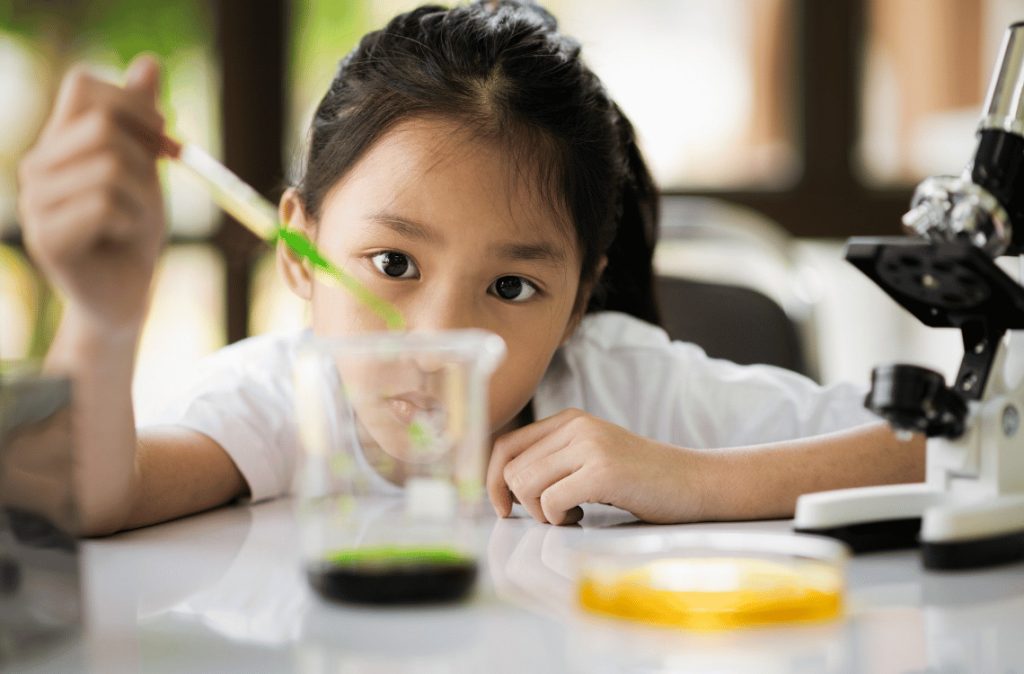Spark a love for science with these 15 fun and educational experiments designed for curious young minds. These interactive projects introduce fundamental concepts in physics, chemistry, and biology while ensuring every child is entertained and engaged. So, put on your safety goggles and let the learning begin!
1. Volcano Eruption
Witness the thrill of a chemical reaction with the eruption of a homemade volcano. Mixing vinegar and baking soda creates a dynamic foamy burst that mimics molten lava effortlessly. It’s a perfect and lively way to teach kids about reactions between acids and bases, and it can also lead to discussions about volcanic formations around the world.
2. Invisible Ink
Unlock the mystery of chemistry with lemon juice as invisible ink. Children can write messages that stay hidden until warmed up, revealing the secrets of acids and heat reactions. It’s an intriguing blend of science and fun, allowing young detectives to learn while they play.
3. Dancing Raisins
Observe a fascinating display as raisins jive in a glass of fizzy water. This simple yet captivating experiment showcases buoyancy and the effects of carbonation in liquids, providing a visual and kinetic way to understand these scientific principles.
4. Rainbow in a Glass
Layering coloured liquids of different densities can create a stunning spectrum in a glass. As children explore density and solubility, they also grasp the importance of following instructions and measuring to create the perfect stratified result—a vibrant way to explore physical properties and scientific methodology.
5. Balloon Rockets
Blast off to fun while discovering principles of thrust and propulsion with balloon rockets. This experiment makes Newton’s third law of motion tangible and teaches the basics of aerodynamics in a way that will have your kids reaching for the stars.
6. Homemade Slime
Dive hands-first into polymer science by creating homemade slime. This sticky, viscous substance showcases the fascinating transformation from liquid to semi-solid and introduces the concepts of chemical bonding and material properties in an irresistibly touchable form.
7. Egg in a Bottle
Challenge your child’s understanding of air pressure with the egg-in-a-bottle experiment. A lit match causes the air to expand and then contract, sucking the egg into the bottle below. This clear demonstration of air pressure differences is not just a neat trick—it’s an exploration of physical science.
8. Magic Milk
Watch in awe as food colouring races across milk at the addition of a single drop of soap. This experiment, which illustrates surface tension and the reaction between soap and fat molecules, is a picturesque way to delve into chemical interactions and the unexpected beauty of science.
9. Baking Soda and Balloons
Illustrate a chemical reaction with a visually striking demonstration as you use baking soda and vinegar to inflate a balloon. It’s a perfect gateway for discussing gas laws, chemical reactions, and even the principle of mass conservation.
10. Homemade Lava Lamp
Build a homemade lava lamp and delve into the principles of immiscibility and density. With household ingredients, this experiment lights up children’s eyes and minds, giving them a colourful demonstration of how substances interact with each other.
11. Static Electricity
Demonstrate the science of static electricity with a balloon that can attract paper or hair after being rubbed on fabric. This experiment serves as an excellent introduction to the concepts of electrical charge and atomic theory without involving complex equipment.
12. Mentos and Soda Geyser
Release a fountain of soda by combining Mentos with soda to create a jet of foam. This dramatic demonstration of a physical reaction reveals how the surface area can vastly change reaction rates, providing a memorable lesson in physical science and kinetics.
13. DIY Rain Cloud
Make your own rain cloud in a jar to understand the water cycle processes of condensation and precipitation. This experiment uses simple materials to recreate the complex process of cloud formation and rainfall, offering a tangible look at an everyday occurrence.
14. Lemon Battery
Harness electricity with a lemon, some copper, and zinc to power a small device. This battery-building exercise sheds light on electrochemistry and energy conversion, laying the foundation for understanding how everyday batteries operate.
15. Invisible Glass
Make glass “vanish” with a gelatin-filled glass immersed in oil to explore refraction and light behaviour. It’s a simple yet astounding experiment that can lead to discussions about light waves, material properties, and even the philosophy of seeing as believing.
Each experiment is a doorway to wonder, opening up conversations around science and its role in our world. With adult guidance, these explorations offer safe and exciting ways to apply scientific concepts, making education a joyous adventure. Happy experimenting!
